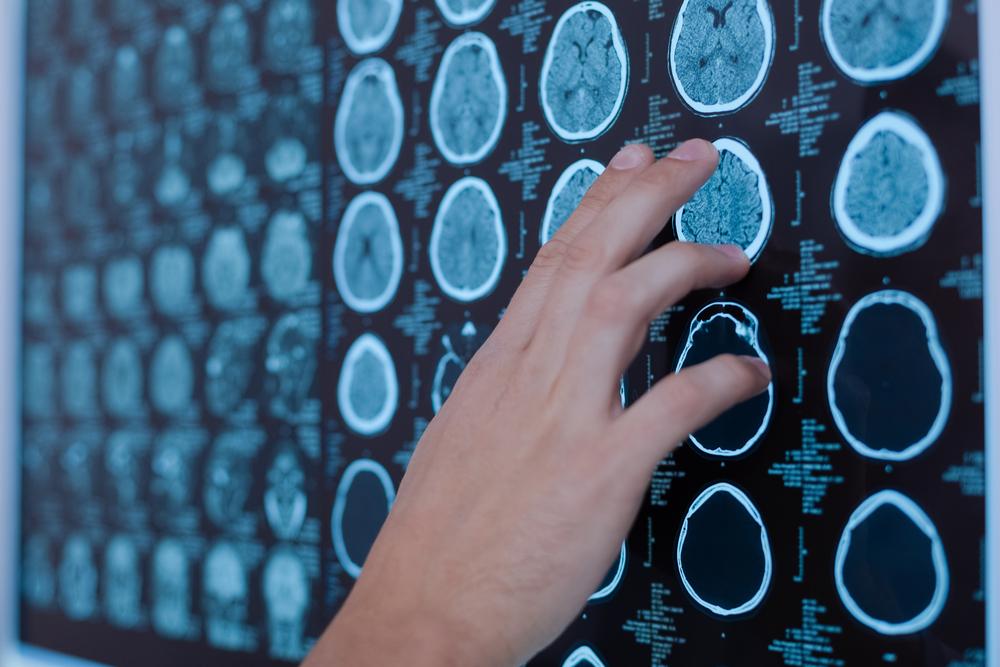#MSParis2017 – Researchers Disagree on Feasibility of Using Disease-modifying Therapies in RIS Patients
Written by |

Radiologically isolated syndrome (RIS) is a rare and relatively recent condition in which people have multiple sclerosis (MS)-like brain and spinal cord lesions without showing disease activity. But since the establishment of the RIS diagnosis, researchers have not reached an agreement on whether these patients should receive MS disease-modifying therapies.
At the 7th Joint ECTRIMS-ACTRIMS Meeting Oct. 25-28 in Paris, two researchers met for a debate on the topic.
Darin T. Okuda from the University of Texas Southwestern Medical Center argued that RIS presents a “remarkable opportunity” to stop potential disease — with resulting disability — in its tracks.
He based his argument on the fact that magnetic resonance imaging (MRI) lesions found in RIS patients are identical to those seen in patients with MS in terms of lesion size, number, and spatial spread, suggesting the presence of an autoimmune-based injury in their brain or spinal cord.
RIS patients are at high risk of developing MS, including primary progressive disease, and studies confirm that people with RIS have an increased risk of developing additional lesions that signal inflammatory demyelinating events. Some also show features of early neurodegeneration before they start developing symptoms, Okuda said.
“The management of chronic conditions involves interventions within the asymptomatic phase to reduce morbidity and mortality,” he said, referring to diseases like diabetes. “Given the existing natural history data [of RIS], the early introduction of DMTs [disease-modifying therapies] is highly reasonable,” he added, emphasizing that treatment, nonetheless, must be rational.
DMTs present a viable approach, aiming to lower the probability of future disability while preserving quality of life, he said.
Okuda also offered a provocative question at his presentation: “Would our concerns regarding treatment in RIS be different if the costs of DMTs were not so exorbitant or if the treatments were substantially safer?”
According to Okuda, the correct approach should be “in keeping with our goals as healthcare providers in MS — to prevent disease, early disability, and premature death.”
On the other side of the podium, Christine Lebrun from the Cote d’Azur University in Nice, France, did not agree.
With RIS being an ultra-rare condition, patients have the potential to be misdiagnosed, she argued. And while studies have identified risk factors, including male gender, younger age, and spinal cord lesions, many patients with these types of lesions may never go on to develop symptoms, she said, likening the situation to MS patients that remain stable for years.
“Is earlier better in demyelinating disease?” Lebrun asked. “Not every neurologist would agree because not every patient should be treated at diagnosis. If you look at MRIs, you will see that not all fulfill [the diagnostic] criteria.”
According to Lebrun,”we need to learn to undiagnose MS and RIS. Only 35.4% of RIS patients fulfilled 2010 McDonald criteria.”
So with the current knowledge, she believes it is better to continue studying the outcomes and potential prognostic factors, rather than treating people who might not need therapy.
“Are RIS already MS patients? Because we treat them with MS drugs,” Lebrun said. “There are many unknowns. There are no studies confirming the impact of treatment on natural history. Studies are needed on how to best monitor risk of a clinical event.”
Although there is no clinical evidence of RIS treatment, she emphasized that “the effect of healthcare costs are already high.”
Of note, Lebrun advised against the use of off-label MS disease-modifying drugs.
Since two Phase 3 clinical trials are exploring the potential of Tecfidera (dimethyl fumarate; NCT02739542) and Aubagio (teriflunomide; NCT03122652) to delay or prevent the development of symptoms, she advises RIS patients to not be treated outside of trials.
At the end of the debate, the audience was asked to raise their hands to the question: “How many of you treat RIS?” Only a few hands were raised. In comparison, many people raised their hands when asked how many gave no treatment to RIS.





